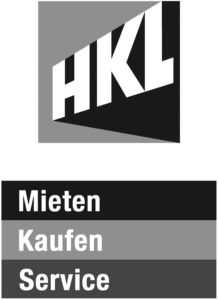Statement
DIGNITY
Tribute to Ágnes Lukács
One of the prisoners of the Neuengamme concentration camp near Hamburg was the Jewish-Hungarian artist Ágnes Lukács, who was born in 1920, arrested in the spring of 1944, and liberated by the US army on 14th April 1945 in the Salzwedel subcamp. After the war, Lukács spent several decades artistically dealing with the pictorial motif of a closely-knit group of women that pushed forward together and comforted one another against a background of radical violence, as in the drawing “Összebújva”, which belongs to a cycle of 24 works in total.
These images of female solidarity in a violent system, which Burkhard Schittny got to know in the Neuengamme concentration camp memorial, this visualization of history in the concentration and labour camp, in which about 50 000 people died or were murdered as a result of barbaric working and living conditions, deeply touched the artist.
In the 60-minute filmic work “Dignity – Tribute to Ágnes Lukács”, Schittny takes up the image motif and transports it into the present through a group of actresses. The non-linear narrative style is striking in this slow-motion film. Over and over again, the women’s group is formed anew. Individuals step out of isolation into the group, which comes together repeatedly in a variety of ways, forming itself densely again and again in an oppressive, dimly lit place.
The clothing of the women with bald, shaved heads and bare feet also takes up motifs by Lukács, which Schittny uses as a template. Her white coats are decorated with different patterns. Like Ágnes Lukács, in his adaptation Schittny is concerned with counteracting dehumanization in tyranny – giving back dignity to the depicted.
The theme of his filmic examination is solidarity but also, as the art historian Christiane Heß writes, “the experience of violence and the struggle for self-assertion and individuality”. The technique of slow motion (the montage of various sequences) is an adequate way of capturing the artist’s decades-long preoccupation with her subject in new images.
Despite all the necessary aestheticization in cinematic adaptation, Schittny here succeeds in translating the creative process of the artist Ágnes Lukács, who was imprisoned in the camps of Auschwitz, Gross-Rosen and Neuengamme and who had for years created her works from memory alone after the end of National Socialism. In addition, “Dignity – Tribute to Ágnes Lukács” transposes a female “strategy of survival” (Heß) into the present.
(References: Christiane Heß, Gezeichnete Erfahrung? Über das Motiv der Nähe im Bilderzyklus von Ágnes Lukács, in: Hamburger Schlüsseldokumente zur deutsch-jüdischen Geschichte, 21st September 2018)
Author of the text for DIGNITY: Marc Peschke
HUNGER
An hourglass is filled with breadcrumbs and sawdust. The work illustrates the race against time in the concentration and labour camp. The more time passes, the greater the probability of dying of malnutrition in the event of extreme physical strain due to forced labour. The bread in the clock is mixed with sawdust – a murderous practice used while preparing bread in some concentration camps.
————————————————————
Quotation
“Das war nichts, wenn man bedenkt, daß man etwas bekam, das nicht einmal wie Haferschleim aussah, sondern nur widerlich und wäßrig war; und ein Stück sogenanntes Brot, das kein Brot war, es war Sägemehl. Aber wir hätten sogar eine Ratte gegessen, wenn wir eine bekommen hätten, so hungrig, krank und müde waren wir.”
“That was nothing if you consider that you got something that didn’t even look like oatmeal, but was just disgusting and watery; and a piece of so-called bread that wasn’t bread, it was sawdust. But we would even have eaten a rat if we had had one, so hungry, sick and tired we were.”
References (QUOTATION):
First publication of the essay in the 1993 version published in:
Landsberg im 20. Jahrhundert – Themenhefte zur Landsberger Zeitgeschichte – Heft 4: Das KZ-Kommando Kaufering 1944/45: Die Vernichtung der Juden im Rüstungsprojekt “Ringeltaube” – ISBN: 3-9803775-3-9
Work Process
Artworks
Hunger
Hourglass, Installation, 28x14x14 cm
Dignity
Tribute to Ágnes Lukács
video
Biography
Born in 1966 in Germany, the artist Burkhard Schittny obtained his diploma in photography at the Art Academy in Bremen, followed by the Master of Fine Arts two years later in 2001 at the Central Saint Martins College of Art and Design in London. His work has been awarded nationally as well as internationally and has been shown in numerous exhibitions – among others at Deichtorhallen Hamburg, Centrum Beeldende Kunst Rotterdam and at the Kunstbibliothek Berlin. He has worked for leading magazines such as The New York Times Magazine, New York Magazine, Die Zeit and Fortune. Burkhard Schittny lives and works in Hamburg.
Driven by an interest in the psychological backgrounds and phenomenon of the fears and traumata caused by war, Burkhard Schittny started a multi-part multimedia series of documental-conceptual pieces in 2010 about his father’s theatres of war and his mother’s expulsion in the wake of World War II.
Under the title “Legacy Of Fear – The War Within Me” a number of pieces were done where Schittny explored if and in what way the experiences of his parents in World War II could have been traumatizing for him and how they influence his life even today.
In continuation, his work went beyond family history to pieces about war and power also reflecting recent events and societal phenomena – even presenting an artistic comment on the refugee matter.
In the execution he also uses the following tools and media beside the prioritized photography: video, sound, performance, installations, lyric-based emboss and photo pieces.
With Support of


